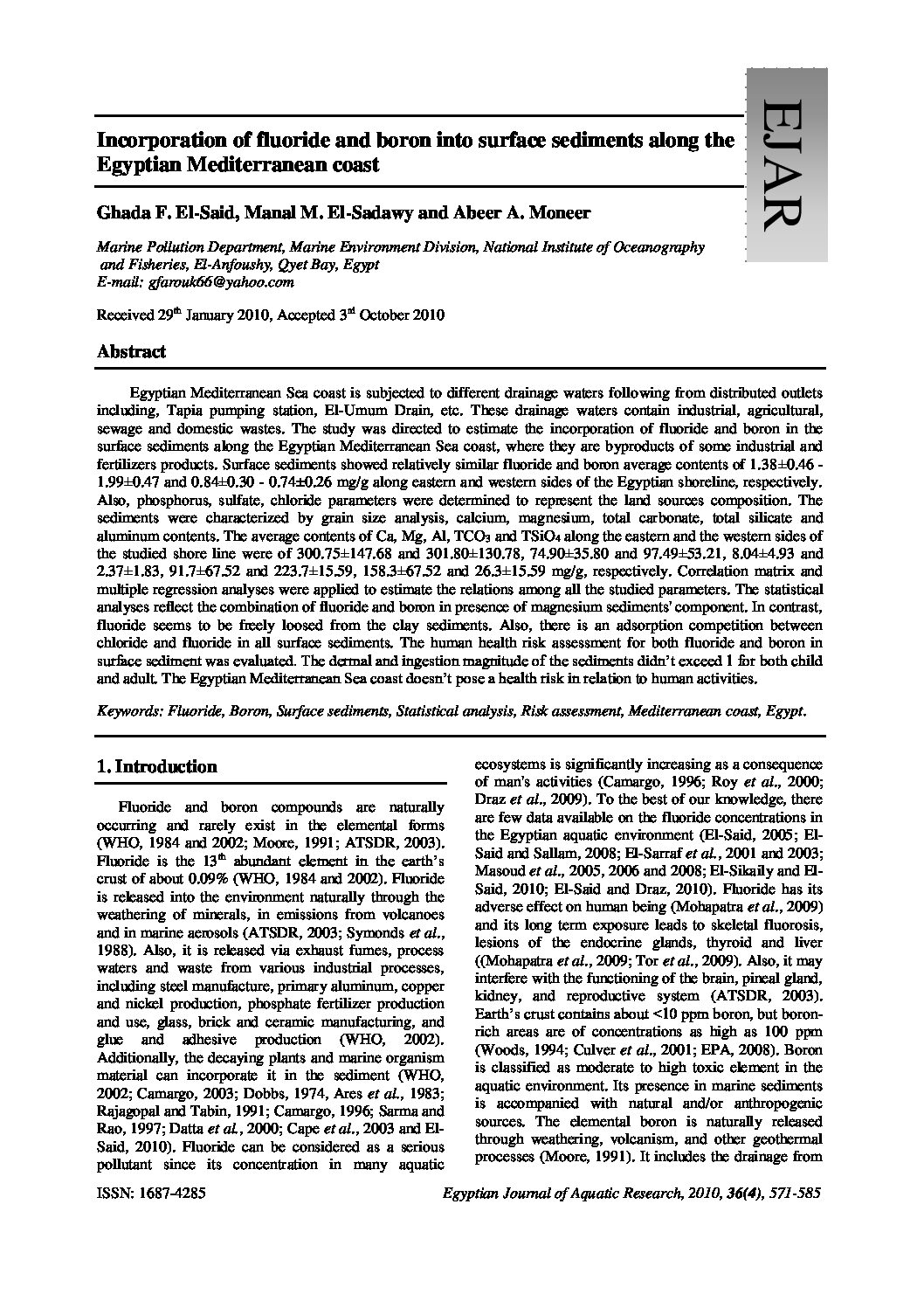Categories
vol-36Incorporation of fluoride and boron into surface sediments along the
Egyptian Mediterranean coast
Ghada F. El-Said, Manal M. El-Sadawy and Abeer A. Moneer
Marine Pollution Department, Marine Environment Division, National Institute of Oceanography
and Fisheries, El-Anfoushy, Qyet Bay, Egypt
E-mail: [email protected]
Received 29th January 2010, Accepted 3
rd October 2010
Abstract
Egyptian Mediterranean Sea coast is subjected to different drainage waters following from distributed outlets
including, Tapia pumping station, El-Umum Drain, etc. These drainage waters contain industrial, agricultural,
sewage and domestic wastes. The study was directed to estimate the incorporation of fluoride and boron in the
surface sediments along the Egyptian Mediterranean Sea coast, where they are byproducts of some industrial and
fertilizers products. Surface sediments showed relatively similar fluoride and boron average contents of 1.38±0.46 –
1.99±0.47 and 0.84±0.30 – 0.74±0.26 mg/g along eastern and western sides of the Egyptian shoreline, respectively.
Also, phosphorus, sulfate, chloride parameters were determined to represent the land sources composition. The
sediments were characterized by grain size analysis, calcium, magnesium, total carbonate, total silicate and
aluminum contents. The average contents of Ca, Mg, Al, TCO3 and TSiO4 along the eastern and the western sides of
the studied shore line were of 300.75±147.68 and 301.80±130.78, 74.90±35.80 and 97.49±53.21, 8.04±4.93 and
2.37±1.83, 91.7±67.52 and 223.7±15.59, 158.3±67.52 and 26.3±15.59 mg/g, respectively. Correlation matrix and
multiple regression analyses were applied to estimate the relations among all the studied parameters. The statistical
analyses reflect the combination of fluoride and boron in presence of magnesium sediments’ component. In contrast,
fluoride seems to be freely loosed from the clay sediments. Also, there is an adsorption competition between
chloride and fluoride in all surface sediments. The human health risk assessment for both fluoride and boron in
surface sediment was evaluated. The dermal and ingestion magnitude of the sediments didn’t exceed 1 for both child
and adult. The Egyptian Mediterranean Sea coast doesn’t pose a health risk in relation to human activities.
Keywords: Fluoride, Boron, Surface sediments, Statistical analysis, Risk assessment, Mediterranean coast, Egypt.







